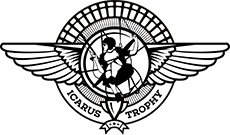Please note that spellings have been Anglicised. Standards and all.
FAR 103 Familiarisation with Race Director Mr Shane
The following is a quick digest for foreign paramotor pilots to familiarise themselves with the laws regarding ultralights (paramotors) in the USA.
The US is lucky enough to have very few requirements to legally fly a paramotor in the country. You don’t even need a license! But there are a couple of hard-and-fast rules that differ slightly from the UK and Europe, and they must be obeyed while we are guests visiting the country.
Equipment
First and foremost is equipment-specifics. In order to fall into the category of an “ultralight,” your paramotor must:
• Weigh less than 254lbs
• Have a fuel capacity of no more than 5 US gallons
Additional restrictions for participating in the Icarus Trophy:
• Must be equipped with a certified reserve parachute suitable for the pilot’s all-up weight
• Be in good repair at all times during the race
Operating Rules
• The letter of the law says that “no person may operate an ultralight in a manner that creates a hazard to other persons or property.” This rule is particularly ambiguous - you as a pilot have the awesome responsibility of flying in a manner that would not be interpreted by anyone as “hazardous,” so be on your best behaviour.
• The law also felt it necessary to mention that you may not drop any objects if such action creates a hazard to persons or property. It may be okay to do a flyby of your LZ and drop off your gear prior to making a landing, just be sure it couldn’t hurt anyone or anything.
• Ultralight flying hours are from official sunrise (in that locale) to official sunset. Race class participants are allowed to fly 30 minutes before sunrise and thirty minutes after sunset, if they’re equipped with an anti-collision light (strobe) that is bright enough to be seen three miles away. The Race committee will approve all anti-collision light setups during pre-race inspection. We might entrust that bit to Katy.
• Okay, the big one. And the one that is easiest broken and most-often violated… “No person may operate an ultralight vehicle over any congested area of a city, town, or settlement, or over any open-air assembly of persons.” Again, vague. There is no definition of “congested,” but we can say that if you are flying over a single house in the middle of a giant farm and you have a malfunction, throw your reserve and land on the house, then you were flying over a congested area.
• It is imperative that you never fly over a congested area or group of people at any altitude. Not even once. The race team monitors closely for pilots’ ground tracks - and will impose race fines for first-offenders. Repeat offenders will be disqualified from the race and reported to the Federal Aviation Administration for violations of aviation regulations.
• We as ultralights are not allowed to fly in “controlled” airspace - which includes Class A (all airspace above 17,999’), class B, C, class D, and the lateral boundaries of surface-based class E airspace. You must familiarise yourself with US airspace definitions and boundaries in order to avoid an accidental airspace violation.
• Paramotors may not operated in or over any Prohibited Areas or active Restricted Areas (read aerocharts for designations) without permission from the controlling agency. Lucky for us, there aren’t too many on the route - but you must familiarise yourself with them.
• Areas designated by NOTAM or Temporary Flight Restrictions (TFRs) to be off-limits must be avoided. If you’re scratching your head wondering what that means, you have some studying to do.
• “Visual reference with the surface” - despite what you may have seen in certain paramotor videos, flying above clouds in the US in most cases is both highly illegal and very often highly dangerous. You must maintain visual reference with the surface and maintain cloud clearance and visibility requirements at all times while flying. The consequences are steep on this one - the danger in “flying the clouds” is the unknown commercial air traffic that you’re putting in danger. If you’re unfamiliar with the Flight Visibility and Cloud Clearance requirements, be diligent about studying them prior to flying in the US.
Summary
FAR 103 is a short document with just a handful of rules - it’s really easy to follow and at the same time is really easy to accidentally break rules. We hope you will study the attached document (official regulation) and know it like the back of your hand.

